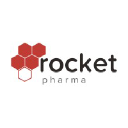Companies
Discover all trending biotech companies
Discover all trending biotech companies

Company Research Platform
Global Employees
151
R&D Investment
171200000
This segment focuses on developing gene therapies using ex vivo lentiviral vectors to treat rare genetic disorders. Research and development efforts are directed towards Fanconi Anemia (FA), Leukocyte Adhesion Deficiency-I (LAD-I), and Pyruvate Kinase Deficiency (PKD). The approach involves collecting patient cells, genetically modifying them with a lentiviral vector to correct the underlying genetic defect, and then reintroducing the modified cells back into the patient. This aims to restore normal cellular function and alleviate disease symptoms. Clinical trials are underway to evaluate the safety and efficacy of these therapies, with the goal of providing long-term curative potential for patients with these debilitating conditions. The segment leverages advanced gene editing and cell processing technologies to optimize therapeutic outcomes and minimize potential side effects. Future opportunities include expanding the application of this platform to other genetic diseases and improving the efficiency and scalability of the manufacturing process.
This segment is dedicated to developing gene therapies using in vivo adeno-associated virus (AAV) vectors, primarily targeting Danon Disease, a multi-organ lysosomal-associated disorder. Research and development activities involve designing and optimizing AAV vectors to deliver therapeutic genes directly into affected tissues, such as the heart. The goal is to correct the genetic defect causing Danon Disease and prevent or reverse the progression of heart failure. Clinical trials are in progress to assess the safety and efficacy of this AAV-based gene therapy, with a focus on improving cardiac function and overall survival in patients. The segment utilizes advanced vector engineering and delivery strategies to enhance gene expression and minimize immune responses. Future opportunities include expanding the application of this platform to other organ-specific genetic diseases and developing novel AAV serotypes with improved tissue tropism and reduced immunogenicity. Regulatory pathways are being navigated to accelerate the approval and commercialization of this potentially life-saving therapy.